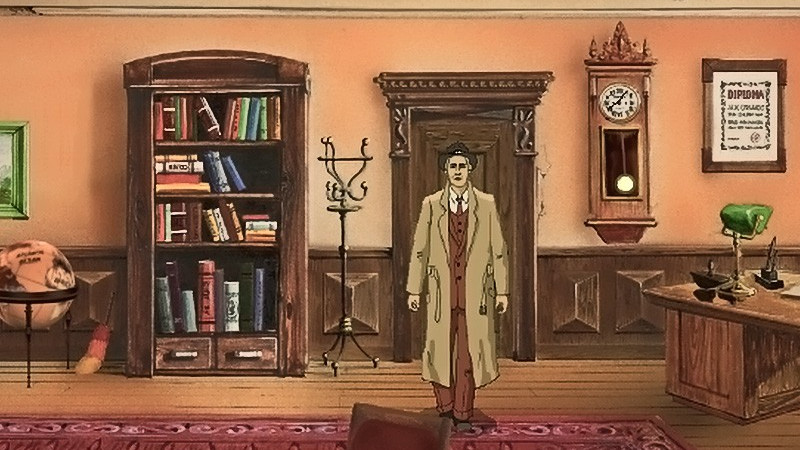
🧭 The History of Adventure Games – From Text Mazes to Interactive Masterpieces
Adventure games are one of the oldest and most influential genres in the history of video games. Their evolution from simple text-based puzzles to richly narrated and visually stunning experiences reflects the development of the entire gaming industry.
🕹️ The Beginning: Text Adventures in a Digital World
It all began in 1976 with Colossal Cave Adventure, created by William Crowther. This text-based game, inspired by cave exploration and tabletop role-playing games, allowed players to type commands to navigate a virtual world and solve puzzles.
Its success inspired many similar titles, including Zork, which introduced a more advanced text parser and became one of the most iconic examples of interactive fiction.
🖼️ The Graphic Era: The Birth of Point-and-Click Adventures
In the 1980s, adventure games underwent a major transformation with the introduction of graphics. Mystery House (1980) by Sierra On-Line was one of the first games to combine text with simple images. Later titles like King’s Quest (1984) offered fully visual environments and character movement via keyboard.
In 1987, Lucasfilm Games (later LucasArts) released Maniac Mansion, which revolutionized the genre with the SCUMM engine (Script Creation Utility for Maniac Mansion). This system let players use the mouse to select commands and interact with the environment, greatly improving accessibility and setting the standard for future titles.
🎞️ The Golden Age: The 1990s and the Rise of Narrative
The 1990s were a golden age for adventure games. Titles like The Secret of Monkey Island, Day of the Tentacle, Gabriel Knight, and Broken Sword captivated players with rich storytelling, humor, and clever puzzles. Full voice acting, hand-drawn animations, and elaborate dialogue trees became trademarks of the genre.
In Poland, this era also saw the rise of local adventure game development. One standout title was The Prince and the Coward (Książę i Tchórz, 1998), praised for its original story and visual style.
📉 Decline and New Hope
By the late 1990s and early 2000s, adventure games started to lose popularity in favor of more action-oriented genres like shooters and real-time strategy. Many studios abandoned the genre, and adventure games became considered niche.
However, thanks to indie developers and digital platforms like Steam and GOG.com, the genre experienced a revival. Games such as Thimbleweed Park, Return to Monkey Island, and Norco proved that adventure games still have a lot to offer, blending classic mechanics with modern narrative design.
🌍 Modern Adventure Games: Diversity and Innovation
Today, adventure games come in many forms – from traditional point-and-click, to interactive films, to experimental narrative experiences. Modern creators explore deep themes like identity, trauma, and human relationships, making the genre more diverse and mature than ever.
Adventure games are one of the oldest and most influential genres in the history of video games. Their evolution from simple text-based puzzles to richly narrated and visually stunning experiences reflects the development of the entire gaming industry.
🕹️ The Beginning: Text Adventures in a Digital World
It all began in 1976 with Colossal Cave Adventure, created by William Crowther. This text-based game, inspired by cave exploration and tabletop role-playing games, allowed players to type commands to navigate a virtual world and solve puzzles.
Its success inspired many similar titles, including Zork, which introduced a more advanced text parser and became one of the most iconic examples of interactive fiction.
🖼️ The Graphic Era: The Birth of Point-and-Click Adventures
In the 1980s, adventure games underwent a major transformation with the introduction of graphics. Mystery House (1980) by Sierra On-Line was one of the first games to combine text with simple images. Later titles like King’s Quest (1984) offered fully visual environments and character movement via keyboard.
In 1987, Lucasfilm Games (later LucasArts) released Maniac Mansion, which revolutionized the genre with the SCUMM engine (Script Creation Utility for Maniac Mansion). This system let players use the mouse to select commands and interact with the environment, greatly improving accessibility and setting the standard for future titles.
🎞️ The Golden Age: The 1990s and the Rise of Narrative
The 1990s were a golden age for adventure games. Titles like The Secret of Monkey Island, Day of the Tentacle, Gabriel Knight, and Broken Sword captivated players with rich storytelling, humor, and clever puzzles. Full voice acting, hand-drawn animations, and elaborate dialogue trees became trademarks of the genre.
In Poland, this era also saw the rise of local adventure game development. One standout title was The Prince and the Coward (Książę i Tchórz, 1998), praised for its original story and visual style.
📉 Decline and New Hope
By the late 1990s and early 2000s, adventure games started to lose popularity in favor of more action-oriented genres like shooters and real-time strategy. Many studios abandoned the genre, and adventure games became considered niche.
However, thanks to indie developers and digital platforms like Steam and GOG.com, the genre experienced a revival. Games such as Thimbleweed Park, Return to Monkey Island, and Norco proved that adventure games still have a lot to offer, blending classic mechanics with modern narrative design.
🌍 Modern Adventure Games: Diversity and Innovation
Today, adventure games come in many forms – from traditional point-and-click, to interactive films, to experimental narrative experiences. Modern creators explore deep themes like identity, trauma, and human relationships, making the genre more diverse and mature than ever.